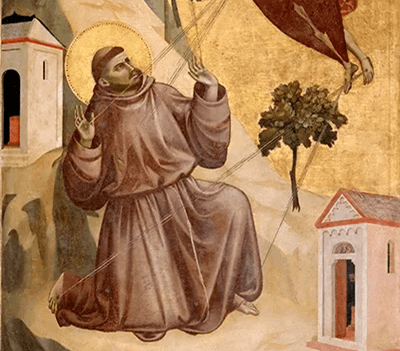The Middle Ages were coming to an end. Its art presented holy beings in a golden, heavenly realm. The Renaissance then burst onto the scene, and it was time for great art to appear on earth, followed by exciting discoveries in science.
Renaissance artists depicted spiritual figures, but they placed them in natural settings and earthly places. One artist led the way: Giotto di Bondone (1267–1337) created paintings that, like highway signs telling what’s ahead, connected with common people and encouraged them to believe in God and respect nature. He painted scenes of miraculous events that showed the power of faith and how belief can accomplish the seemingly impossible.






